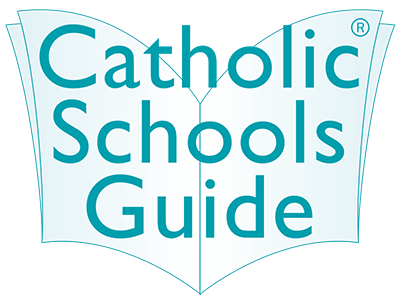News and Media

Productive teaching: A central element in achieving excellence in education by Dr Jennifer Nayler
Powerful learning by students requires productive teaching—a straightforward sentence to write, but there is much involved in teaching for powerful student learning.
The Australian Curriculum Assessment and Reporting Authority is responsible for the development of curriculum and achievement standards, leaving teachers professional space in relation to teaching. A range of factors mediates the space that teachers have in terms of how they support student learning. Teaching standards, along with other expectations of state and territory jurisdictions, employing authorities and schools themselves, exert an influence on the range and balance of strategies teachers take up. While many factors contribute to excellence in education—the focus of this Catholic Schools Guide—teacher practice is central.
In this piece I provide a snapshot of my ‘big six’ in relation to what contributes to productive teaching. Productive teaching is:
- in line with curriculum and assessment
- inquiry-based
- inclusive
- innovative; and it:
- supports intellectual rigour
- utilises integrated curriculum (where appropriate).
School communities are urged not to use the ‘big six’ as a checklist but rather as a starting point for conversations about what supports their children’s learning.
Productive teaching is in line with curriculum and assessment
Ensuring the close alignment of the curriculum (what is taught), assessment (the process of gathering information about what students know and can do in order to further learning) and teaching has been a focus of reform in recent years. The process involves careful identification of the targeted understandings and skills from the required Australian Curriculum in a unit of study. Best practice suggests that the development of engaging, rigorous and relevant assessment tasks that will assess student progress in relation to the curriculum needs to be the next step. It is only then that it is appropriate for the teacher to plan appropriate teaching and learning activities that will maximise success in relation to the assessment tasks for the range of students.
Productive teaching is inquiry-based
Inquiry-based learning (IBL), as it is used here, refers to an approach that involves student investigation where possible, in contrast to a ‘teaching as telling’ approach where students are treated as passive recipients. In an IBL approach, BIG questions and sub-questions guide teaching and learning through learning contexts that serve the Australian Curriculum.
There is, however, still an important role for direct teaching; that is, an approach in which the teacher instructs students explicitly in order to build and reinforce understandings and skills.
Productive teaching supports intellectual rigour
Intellectual rigour is an essential quality of productive teaching as we support students for current and future challenges. The Australian Curriculum, through one of its general capabilities, values both critical and creative thinking. While generating and applying new ideas is pivotal to creative thinking, critical thinking is utilised to develop and understand arguments, problem solve and so on. One key aspect of teaching for intellectual rigour is the use of taxonomies of skills that classify thinking from recall through to more complex processes, such as analysis and evaluation.
Importantly, productive teaching requires explicit use of the above, i.e. students need to know that they are recalling information, analysing or evaluating, for example.
Productive teaching is inclusive
Productive teaching involves identifying and responding to the range of student needs in the classroom. Productive teaching must involve differentiating strategies to maximise learning for all students. Again, a repertoire of strategies is essential. While one student might grasp a concept through direct instruction, another student might need to complete a ‘hands on’ activity, while others might benefit from carefully scaffolded or guided collaborative work.
Productive teaching is innovative
Innovative teaching does not only mean using the latest information and communication technologies. Innovative teaching involves supporting student learning in new and, hopefully, better ways in order to achieve the required curriculum. Having students actively engaged in meaning making might constitute an innovation in a classroom where the teacher has traditionally transmitted information to the relatively passive student. The use of contemporary digital technologies offers school communities engaging and effective ways to investigate, create and communicate.
Productive teaching involves integrated curriculum
The Australian Curriculum has been developed in discrete learning areas, such as English, and subjects, such as Music within the learning area of The Arts. Schools can choose to plan units of study around a single learning area or subject, or to integrate several curricular areas when clear conceptual links exist. Schools might use a combination of approaches, i.e. some units of study are based on a ‘single-subject’ approach, while others are integrated.
In this piece I have attempted to provide snapshots of six elements that might constitute productive teaching: alignment with curriculum and assessment; inquiry-based learning; inclusivity; intellectual rigour; innovation; and integrated curriculum. The enactment of these elements in specific contexts requires ongoing and collaborative conversations, planning and review in school communities in order to serve best the people who matter most—our students.

Dr Jennifer Nayler is an independent educational consultant, speaker, facilitator and writer. As well as tertiary teaching and research experience, she has worked in education and social policy development, taught in secondary schools and worked on major national and state projects. Her key focus is supporting productive teaching for powerful student learning within the context of the Australian Curriculum.
All of this work is underpinned by a strong commitment to social justice with practical support for curriculum, teaching and assessment that engage young people in rigorous and innovative learning, as well as support for strategic planning.
Jennifer edits a national journal, the Primary and Middle Years Educator, published by the Australian Curriculum Studies Association.
Her publications include:
- Evaluating for engagement: Enhancing learning in the middle years
- Pedagogies: Storylines and storyspaces.
She was chief external writer for the Queensland Studies Authority’s (QSA) publication, Building student success. She has written several discussion papers for the QSA including Enacting the Australian Curriculum: Planning issues and strategies for P–10 multiple year level classrooms.
To contact Jennifer email jenny@learningajency.com.au

